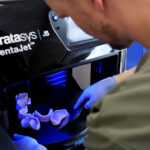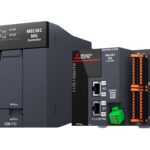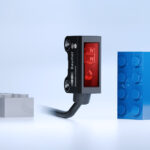In automotive safety, few advancements have had as significant an impact as the introduction of automated emergency braking (AEB) systems. As a crucial safety feature, not only for large HGVs but any vehicle on the road, AEB systems rely on a reaction time faster than that of a human — so how can we ensure they are up to scratch? Here, Ross Turnbull, Director of Business Development and Product Engineering at ASIC design and supply company Swindon Silicon Systems, explains.

According to the RAC, in the UK, just 21 per cent of new vehicles come with AEB fitted as standard, with 27 per cent of vehicles offering systems as optional extras for an additional charge. However, AEB will only become more common as supportive legislation comes into place. In May 2024, the EU made AEB a legal requirement for all new vehicles, and the US will be following suit for cars and light trucks from September 2029.
Understanding AEB
AEB systems work by autonomously applying the brakes to mitigate an accident. When a potential collision is detected and the driver fails to respond, the system automatically applies the brakes to either prevent impact or reduce its severity by lowering the vehicle’s speed. There are three distinct stages, each activated only if the driver has not taken action and a crash seems imminent.
In the first stage, an audio-visual warning appears on the dashboard if the system detects that the vehicle could potentially collide with traffic ahead. This serves as an initial alert to the driver to take corrective action. If the driver fails to respond and a collision still appears likely, the system progresses to the second stage. At this point, the brakes are applied briefly and sharply to capture the driver’s attention. Additionally, the braking system is charged in preparation for full application if necessary.
In the third and final stage, if a collision remains imminent, the system applies the brakes with full force. This application is stronger than what the driver could achieve manually, bringing the vehicle to a stop or significantly reducing its speed to minimise the impact.
The importance of real-time sensing
AEB systems do not need to be manually activated or deactivated. These sophisticated systems are made up of many sensors, which include radar, lidar, ultrasonic sensors and cameras that gather real-time data on obstacles, other vehicles, pedestrians and road conditions. The effectiveness of an AEB system hinges on the precision and reliability of these sensors. It must detect potential hazards accurately, and quickly relay this information to the vehicle’s central processing unit, which then decides whether to apply the brakes.
Once the environmental data has been collected, it’s necessary to convert the analogue measurements into a digital signal for the control system to understand and interpret the values. To perform the necessary signal conditioning, processing and digitisation, a standard off-the-shelf IC may be used. But for manufacturers seeking to unlock further optimisation, it’s possible to use an Application Specific IC (ASIC) instead.
The case for ASICs
ASICs are designed for a specific application, allowing them to be optimised for the exact requirements of AEB systems. This ensures that ASICs can handle demanding real-time data processing tasks with exceptional speed and efficiency, enabling the AEB system to react in milliseconds to prevent collisions.
One of the significant benefits of ASICs is their superior power efficiency. This is particularly important in AEB systems, where continuous operation of sensors and processing units must be balanced against the vehicle’s overall power consumption.
ASICs can be designed to integrate multiple functions into a single chip, reducing the overall footprint of the electronic control unit. This compact integration is crucial in automotive applications where space is at a premium. This allows the AEB system to be more compact and lightweight, facilitating easier integration into various vehicle models without compromising performance.
Over the lifecycle of a vehicle, the cost-effectiveness of ASICs becomes apparent. While the initial design and development of ASICs is an investment, the economies of scale in manufacturing result in lower unit costs. This cost efficiency makes ASICs an attractive option for widespread adoption in AEB systems.
Swindon Silicon has established itself as a leader in the design and supply of custom ASICs for automotive applications like AEB systems. One key benefit of partnering with Swindon is its ability to provide a full turnkey solution. This comprehensive approach includes everything from initial design and specification to final supply and support. By offering a complete solution, Swindon Silicon not only meets the technical requirements of AEB systems but also ensures consistent supply and availability for the lifetime of the product. This provides significant value to automotive manufacturers, who can rely on Swindon for end-to-end support and superior performance.
As automotive technology continues to advance, the role of AEB systems in enhancing vehicle safety will become even more critical. Future developments in AEB technology will likely include greater integration with other advanced driver-assistance systems (ADAS), improved sensor fusion techniques and enhanced predictive capabilities. Integrating custom ICs offered a multitude of benefits for automotive safety systems, suitable for current applications and future additions.








